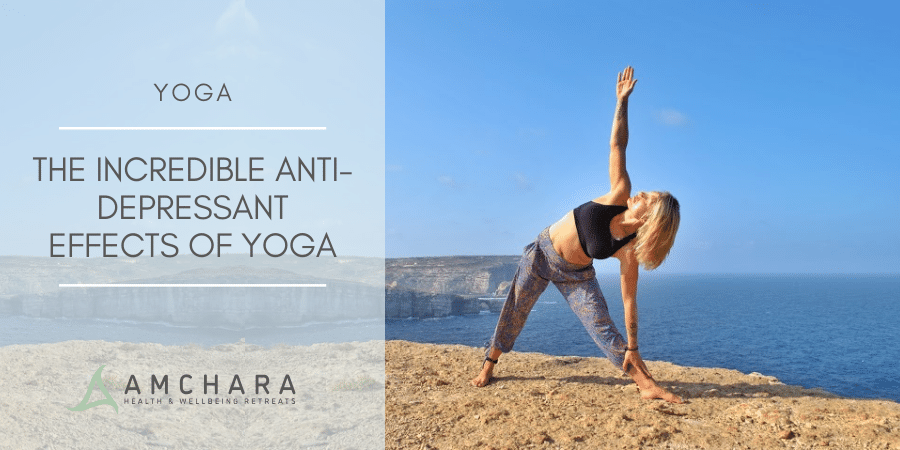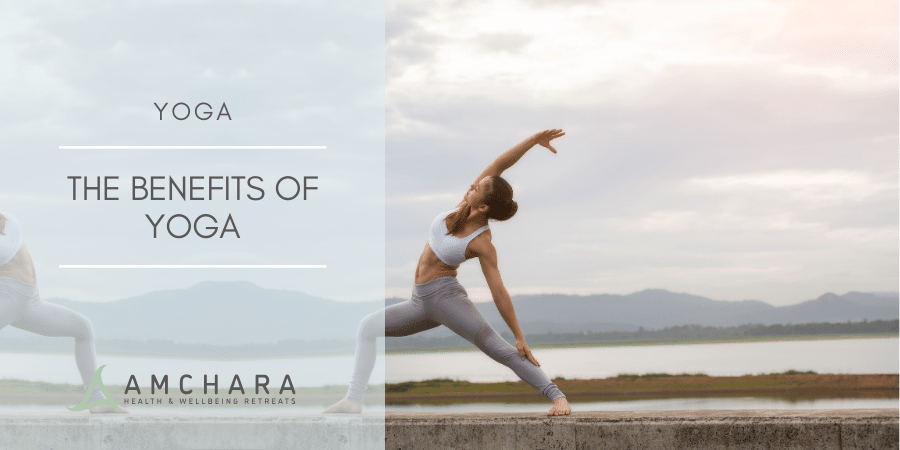Topics Covered in this article:
- Benefits of yoga
- 12 yoga poses
- Downward Facing Dog: Eka Pada Adho Mukha Svanasana
- Side Plank – Vasisthasana
- Lotus Pose – Padmasana
- Garland Pose – Malasana
- Crow – Bakasana
- Extended Triangle Pose
- Limb Staff Pose or in Sanskrit Chataranga Dandasana
- Warrior Two or in Sanskrit Virabhadrasana dve
- Downward Facing Dog or in Sanskrit
- Upward Facing Dog or in Sankskrit Urhdva Mukha Svanasana
- Vrksasana – Tree Pose
- Virabhadrasana – Warrior Three
- Purvottanasana – Upward Plank Pose
In today’s world, most people are living a fast-paced life. In this climate, many people find it difficult to take time out for exercise and relaxation.
But exercise is a vital part of living a healthy life, with most researchers and doctors recommending doing some kind of mild exercise on a regular basis to keep fit.
Yoga is one such exercise regime that disciplines the mind, body and soul. For those with busy schedules, yoga is a highly adaptable and accommodating solution to fit around your busy, everyday life. Carving out just small portions of time to try some yoga poses on a daily basis is a simple, easy, and inexpensive way of ensuring your fitness stays at its best.
We know that, in the modern internet world, there is an overwhelming amount of often misinformation. That’s why our articles are always evidence-based and orientated towards a holistic and Personalised Health approach, to provide you with actionable knowledge and tips to help you on your journey to optimal health.
In this article we’ll take a closer look at the health benefits of yoga, as well as providing you with some examples of effective yoga poses to get you started on your journey.
Benefits of yoga
A great benefit of yoga is the sense of being re-energised and revived.
With a series of gentle but rigorous stretches and movements, your body will start to feel looser, lighter and more energetic.
A focus on breathing alongside the gentle exercises will also help you improve your mental and physical health, improving metabolism rates and releasing more energy from vital muscles and organs. A 2017 scientific study revealed yoga-based treatments to be an effective alternative treatment for Major Depressive Disorder (MDD), one of the most common mental health disorders in the world.
With a greater sense of energy, you’ll feel more relaxed, improving sleep and strengthening your responses to life’s usual stressors.
In short, yoga has been proven to significantly increase overall quality of life, especially in people suffering from mental or physical health disorders, or chronic pain (as shown in a 2019 study), and is therefore one of the best and most adaptable methods of effective exercise to fit into your daily routine.
Takeaway
Alongside an introduction to yoga, you might also enjoy combining your yoga discovery journey with an overall detox retreat at Amchara, to add the benefits of healthy nutrition to your experience.
A focus on detoxifying but reviving juice fasts and raw foods enables your body to gain optimum nutrition from your food and purge your system of unhealthy toxins that accumulate over time.
Over the course of your Amchara retreat you’ll find that not only does your physical energy and sense of wellbeing improve, but also our experienced Personalised Health practitioners can work with you to explore positive lifestyle choices to help you achieve your health goals, with a tailored approach taking into account your individual circumstances.
You will be immersed in a supportive and nurturing environment that enables you to switch off, relax and kickstart your health journey, including physical activities and empowering, educational talks.
Or why not boost your health by trying Amchara Juicery – cold-pressed, nutritious juices delivered to your door to help you boost your health, naturally. Created by Amchara’s expert in-house health team, you can enjoy a range of fresh, organic juice cleanses (and super soups) at home.
12 yoga poses
Downward Facing Dog: Eka Pada Adho Mukha Svanasana
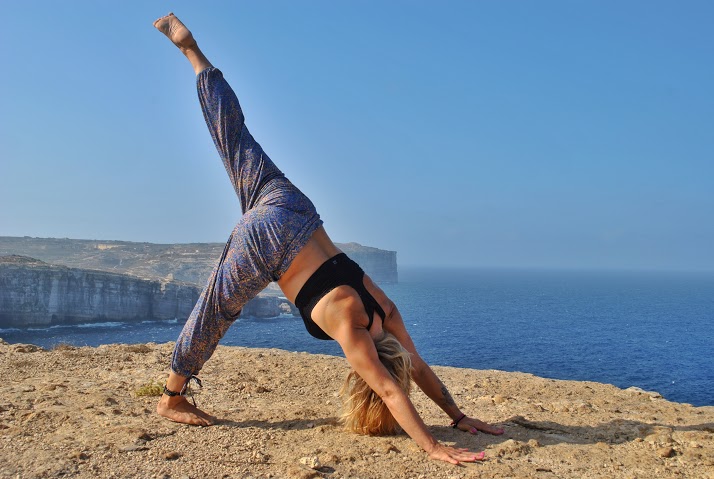
This has all the same benefits as the regular downward facing dog but with the added benefits of testing the strength/flexibility of the standing leg and opening up the hip and groin area.
Again with all poses be guided by your breath and at first maybe hold for 1-2 breaths entering back into the downward facing dog before repeating or trying on the other leg.
Benefits + Contraindications
Pose Benefits:
- Quiets the mind
- Strengthens the arms
- Stretches the hamstrings and hip flexors
- Develops confidence in balance
Contraindications:
- Carpal tunnel syndrome
- High blood pressure
Side Plank – Vasisthasana
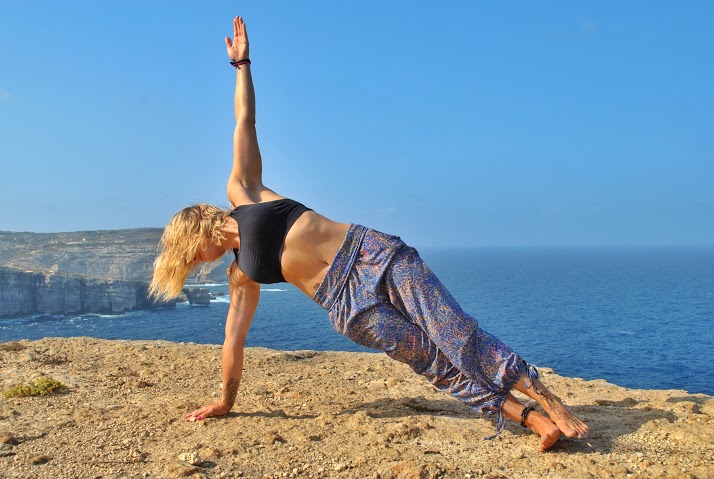
A powerful arm balance, Side Plank Pose — Vasisthasana (VAH-shees-THAH-suh-nuh)
This is an incredible asana to build strength in the core. For those people who have struggled with their spine, for example, scoliosis this is an incredibly healthy way to bring symmetry back to the spine, an equilibrium, and a balance of health to this important structure. This can also be entered by supporting the knee and/or elbows.
Benefits + Contraindications
Pose Benefits
- Creates stability in the spine, core, and pelvis.
- Strengthens the muscles in the shoulder girdle, sides of the body, lower back, gluteals, and abdomen.
- Increases the strength of postural muscles and teaches proper muscle recruitment patterns.
Contraindications
- People with glaucoma, high blood pressure or recent abdominal surgery should avoid this posture.
- People with sinus problems should practice with modifications or approaches with caution as this pose can cause increased pressure in the head.
Lotus Pose – Padmasana

This is an advanced posture that should be entered into mindfully.
There are many variations which may be more appropriate to enter into.
This is often used when sitting in meditation. This will allow one to focus on breath and inner peace.
Physically it will open up the hips, groin and inner thighs.
It’s a great way to increase mobility in the joints of the knees BUT again must be entered into mindfully.
Lastly, it increases strength in the spine but one must work on lengthening whilst sitting in this position.
Benefits + Contraindications
Pose Benefits
- Improves digestion
- Reduces muscular tension and brings blood pressure under control
- Relaxes the mind
- Helps pregnant ladies during childbirth
- Reduces menstrual discomfort
Contraindications
- Ankle or knee injury: Perform this pose only with the supervision of an experienced teacher.
Garland Pose – Malasana

There are other variations that one can use to build up to this pose as it is an incredibly intense hip opener.
It also allows one to build up strength in the legs and feet. By using the arms to press into the inner thighs it will not only increase the stretch felt in the legs but allow an opening across the chest.
Benefits + Contraindications
Pose Benefits
- Stretches groin, lower back, sacrum and hips
- Tones the belly
- Stimulates metabolism and digestive organs
Contraindications
- Knee injuries
- Lower back injuries
- Tight hips or groins
Crow – Bakasana

Crow/Bakasana is a fantastic way to increase upper body and core strength as well as focusing on strength in the hands and wrists.
Bakāsana – often used interchangeably with Kakasana is an asana. In all variations, Crane/Crow is an arm balancing asana in which hands are planted on the floor, shins rest upon upper arms, and feet lift up.
Benefits + Contraindications
Pose Benefits
- The crow pose strengthens the arms, shoulders, and core and stretches the upper back.
- This yoga pose also opens the groin, improves balance and upper body strength
Contraindications
- Wrist, elbow or shoulder injury
Extended Triangle Pose
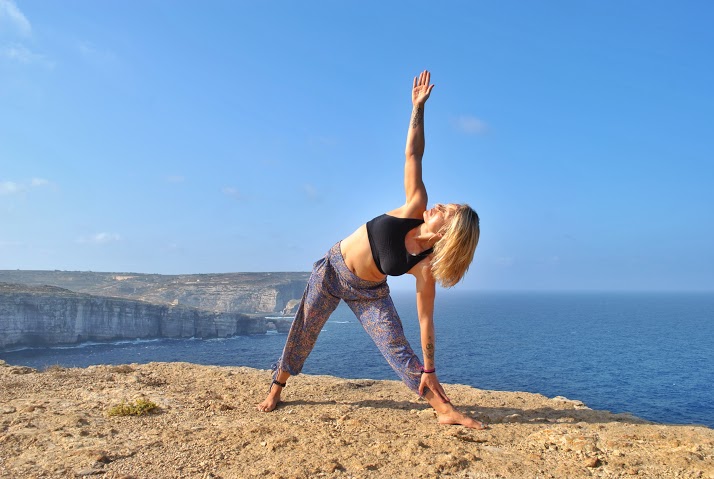
Extended Triangle Pose or in Sanskrit, it is known as; Utthita Trikonasana
This asana has a multitude of physical benefits; it is a great way to build up strength in the ankles, legs and core. It will allow the body to lengthen through the spine and help utilize the muscles in the body that support this important structure.
Limb Staff Pose or in Sanskrit Chataranga Dandasana

This is an advanced pose that requires a lot of upper body, leg and core strength.
There are variations you can use in order to build up this asana. This asana increases strength in the core, arms and legs.
Warrior Two or in Sanskrit Virabhadrasana dve
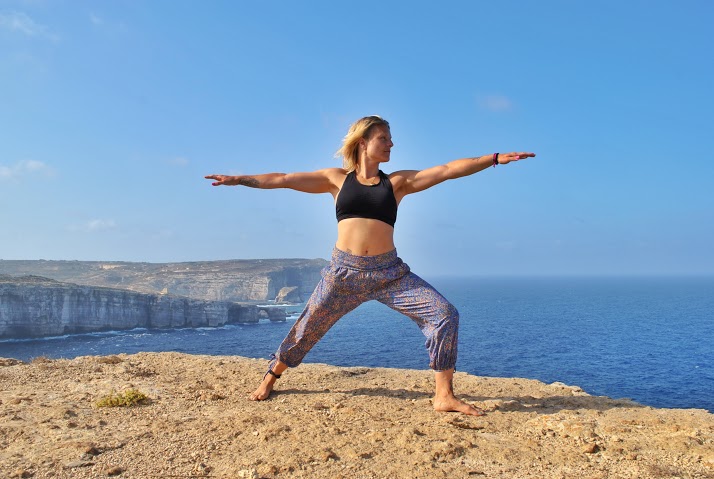
This is an important posture as it helps to strengthen the lower body at the same time as well as providing an opening for the hips, chest and shoulders.
This is an excellent grounding posture to help one focus the mind and embrace a sense of calm and stillness in both mind and body.
Downward Facing Dog or in Sanskrit
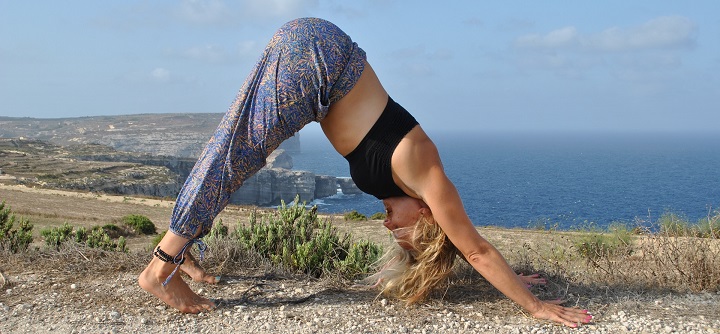
This is an inverted posture that elevates the heart above the head.
Inverted postures are great for using gravity to pump freshly oxygenated blood around the body thus giving the heart a little respite from having to work so hard.
This inverted asana helps strengthen the upper body and it provides a great opening for the back of the body; legs and whole length of the spine.
Upward Facing Dog or in Sankskrit Urhdva Mukha Svanasana

This is a back-bending pose that helps to strengthen the upper body; arms and most importantly the lower back. It causes flexion in the lower vertebrae which are important for healthy mobility of the spine. It’s also a great stretch/opening for the shoulders/chest and abdominals.
Vrksasana – Tree Pose
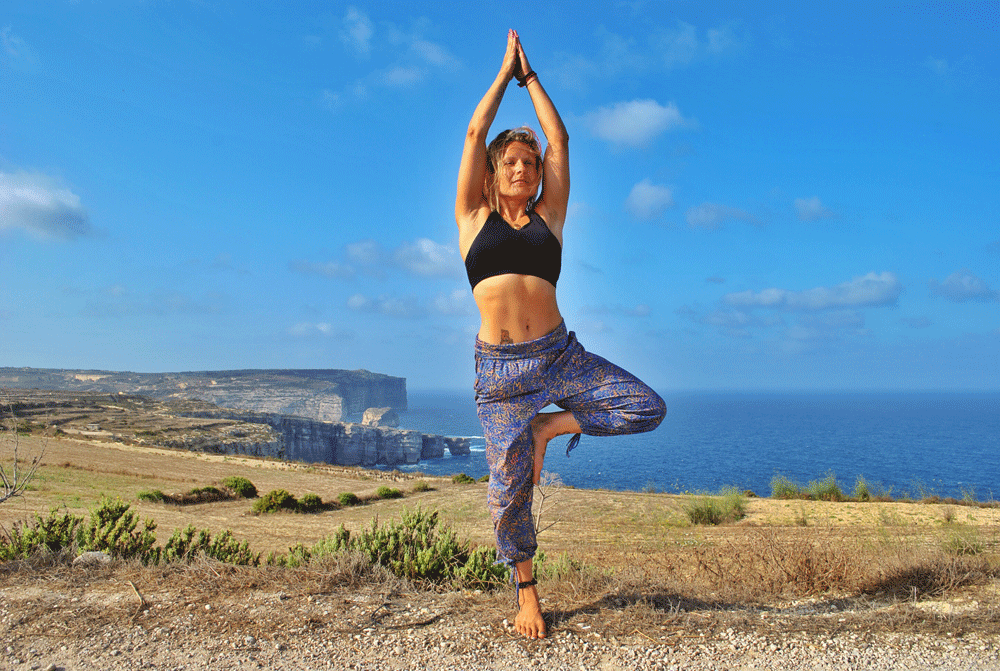
This pose is called the Tree Pose or the Sanskrit name Vrksasana.
This is the classical yoga balance that everybody expects in a yoga class and rightly so as it strengthens the muscles in the supporting leg; thigh, calves, ankles and spine.
The leg that opens out towards the side will help to stretch the muscles in the groin and inner thigh. When you take the arms up towards the sky you allow the body to strengthen the chest and shoulders.
It improves your sense of balance and is very calming and soothing to the central nervous system. It will also reduce swelling in the feet and sciatica.
The other picture shown at the end is with the hands held at the chest and this is a great way to start this asana if you find that by adding the hands up towards the sky – it disturbs the balance.
Benefits + Contraindications
- Benefits: Tree pose increases balance, focus, memory and concentration and strengthens the ankles and knees.
- Contraindications: Recent or chronic knee or hip injury.
Virabhadrasana – Warrior Three
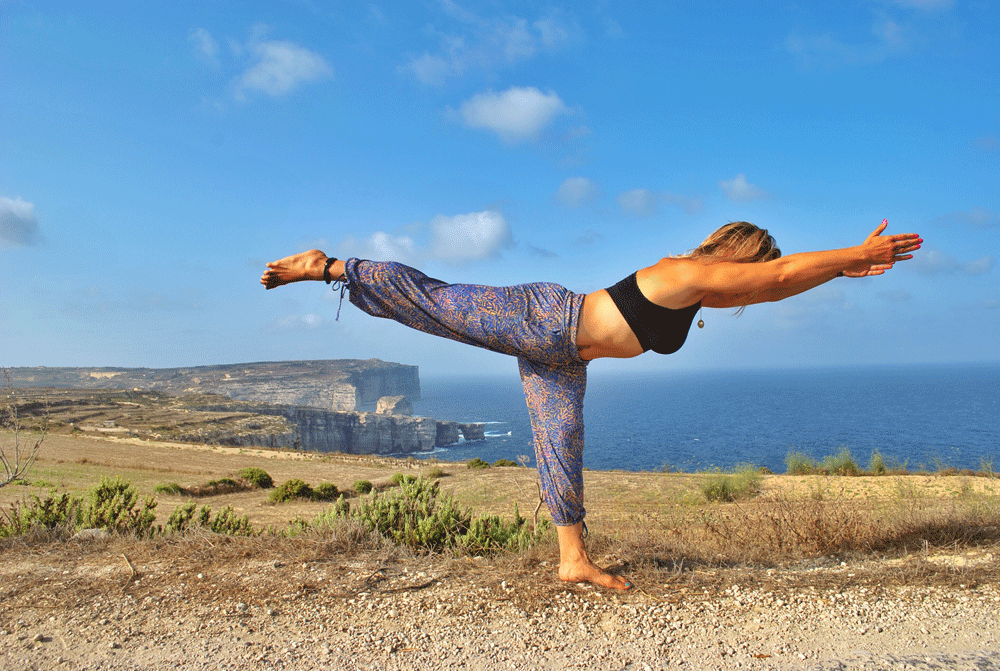
This posture shown is called Warrior Three or the Sanskrit name Virabhadrasana Three.
This can be a challenging asana as it not only requires a lot of flexibility in the supporting leg but also a lot of strength in that same leg and core.
However, you can soften the supporting leg and eventually, this will open up too. It’s a great way of building strength in the legs and ankles.
It will also strengthen the muscles through the shoulders, muscles in the upper back and the stomach. It helps to tone the abdomen and will improve your posture and balance.
Benefits + Contraindications
- Benefits: Warrior I strengthens the legs, opens the hips and chest and stretches the arms and legs. Warrior I develops concentration, balance and groundedness. This pose improves circulation and respiration and energizes the entire body.
- Contraindications: Recent or chronic injury to the hips, knees, back or shoulders.
Purvottanasana – Upward Plank Pose

This asana is called Purvottanasana or the English name is called an inclined plane.
This is a great way to explore back-bends or alternatively, you could start with reverse table top as a variation. One of the many benefits of this pose being that it not only helps to strengthen the arms, wrists and legs but it helps to open the chest, shoulders and hips. It helps to increase the range of movement and flexibility in the ankles too.
Benefits of Upward Plank Pose:
- Strengthens your triceps, wrists, back, and legs
- Stretches your shoulders, chest, and front ankles
- Frees your mind
- Help keep you open to new possibilities
You may be interested in reading:
Great Yoga Videos:
- Best Yoga Videos – by health.com
- 9 Great Yoga YouTube Channels – by huffingtonpost.com
#Mentions

